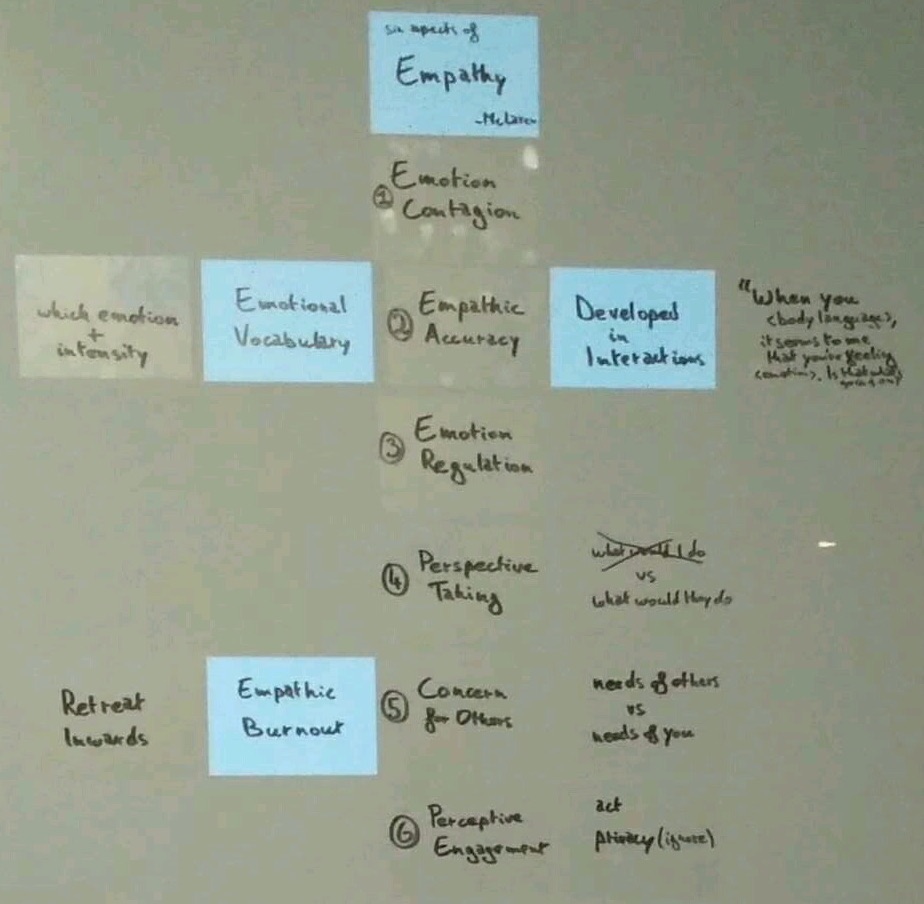1 Emotion Contagion Feeling what others feel
2 Empathic Accuracy Knowing what you feel Being able to name the emotion. Having specific words for different nuances of each emotion. You can develop this in interactions.
When you <body language>, it seems to me that you're feeling <emotion>.
Is that what's going on?
3 Emotion Regulation Making emotion less powerful, so they don’t overwhelm you. This allows you to do the next aspect (2)Naming them helps with this.
4 Perspective Taking
What would I do
is different from
What would they do
Or like, or feel, or …
Like I described earlier in Model: How to treat people Not
treat people like you wish to be treated
but instead
treat people like they want to be treated
5 Concern for Others People sometimes seem to not be concerned for others. But this can have 2 very different causes
- don’t care for others
- care so much, but can’t act, helplessness causing emphatic burnout
6 Perceptive Engagement This is the final goal. Treating people in a way that helps them. Sometimes this means acting, doing something for someone. Sometimes this means ignoring someone.
Example: When you see someone clumsily falling, what they want most of all could be that nobody saw them. You can be kind, and go help them up. You can be kind, and ask them and be okay. But maybe the emphatic thing to do, would be to ignore them and act like nothing happened.

(src: Book: The Art of Empathy - Karla McLaren)